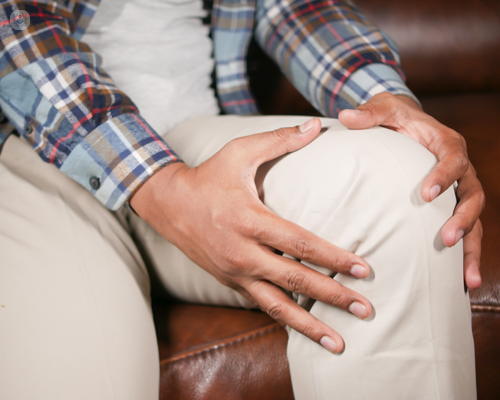The best exercises to assist in preventing a knee replacement
Escrito por:Preventing the need for a knee replacement often involves maintaining the strength, flexibility, and overall health of the knee joint. Exercise plays a crucial role in this process, helping to manage symptoms of osteoarthritis, reduce pain and improve joint function. Below leading consultant trauma and orthopaedic surgeon Mr Farid Ud-Din lists some of the best exercises that can help in preventing the progression of knee problems and potentially delaying or avoiding the need for a knee replacement.

What are the most effective strengthening exercises?
- Quadriceps strengthening: Strong quadriceps muscles are essential for supporting the knee joint. Exercises such as straight leg raises and wall squats are effective in building strength in the quadriceps without putting too much strain on the knee.
- Straight leg raises: Lie on your back with one leg bent and the other straight. Slowly lift the straight leg to about 15-20 cm off the ground, hold for a few seconds, and then lower it back down. Repeat this for several repetitions and switch legs.
- Wall squats: Stand with your back against a wall, feet shoulder-width apart and about 60 cm from the wall. Slowly slide down the wall into a squat position, keeping your knees over your ankles, and hold for a few seconds before sliding back up.
- Hamstring curls: Strengthening the hamstrings, the muscles at the back of the thigh, helps balance the strength around the knee joint. This can be done using ankle weights or resistance bands.
- Hamstring curls: Stand and hold onto a sturdy surface for balance. Slowly bend one knee, bringing your heel towards your buttocks, then lower it back down. Repeat for several repetitions and then switch legs.
Flexibility exercises
- Hamstring stretches: Stretching the hamstrings can improve flexibility and reduce strain on the knee joint.
- Hamstring stretch: Sit on the ground with one leg extended straight in front of you and the other bent with the foot against the inner thigh. Lean forward from the hips towards the extended leg, keeping the back straight, and hold for 20-30 seconds. Repeat on the other leg.
- Calf stretches: Tight calf muscles can contribute to knee pain. Stretching them regularly can help alleviate pressure on the knee.
- Calf stretch: Stand facing a wall with one foot in front of the other, the back leg straight and the front leg slightly bent. Press your hands against the wall and push your back heel into the ground until you feel a stretch in the calf. Hold for 20-30 seconds and then switch legs.
Low-impact aerobic exercises
- Swimming and water aerobics: Water-based exercises are excellent for people with knee pain because the water supports your weight, reducing the stress on your knee joints while allowing you to strengthen muscles and improve cardiovascular health.
- Cycling: Cycling is a low-impact exercise that strengthens the muscles around the knee, improves flexibility, and boosts overall joint health. Using a stationary bike allows for controlled movement and is particularly beneficial for those with more advanced knee problems.
Balance and stability exercises
- Single-leg stands: Improving balance and stability helps prevent falls and reduces the risk of knee injuries.
- Single-leg stand: Stand on one leg while holding onto a sturdy surface for balance. Try to maintain the position for 30 seconds to a minute, then switch legs. To increase difficulty, try closing your eyes or standing on a softer surface.
- Step-ups: This exercise not only improves balance but also strengthens the muscles around the knee.
- Step-ups: Stand in front of a step or low bench. Step onto the bench with one foot, then bring the other up. Step back down one foot at a time. Repeat for several repetitions, then switch the leading leg.
How can you maintain knee health?
- Maintain a healthy weight: Excess body weight puts additional stress on the knee joints, increasing the risk of developing osteoarthritis.
- Listen to your body: If an exercise causes pain in your knee, stop and consult with a healthcare professional.
- Stay active: Regular physical activity, combined with these specific exercises, can help maintain joint health and potentially prevent the need for a knee replacement.
Incorporating these exercises into your routine can help maintain the health of your knees and potentially delay or prevent the need for knee replacement surgery. Always consult with a healthcare provider before starting any new exercise programme, especially if you have existing knee problems.
If you’re looking for expert orthopaedic advice or surgery, arrange a consultation with Mr Ud-Din via his Top Doctors profile.


